Cervical osteochondrosis is a degenerative disease in which the discs thin, altering the anatomy of the cervical vertebrae and injuring nearby nerve endings and vessels. As the degenerative process progresses, it also covers the surrounding structures. The disease is characterized by a whole range of symptoms such as neck pain, dizziness, nausea, limited mobility of the spine and significantly affects the quality of life of patients.
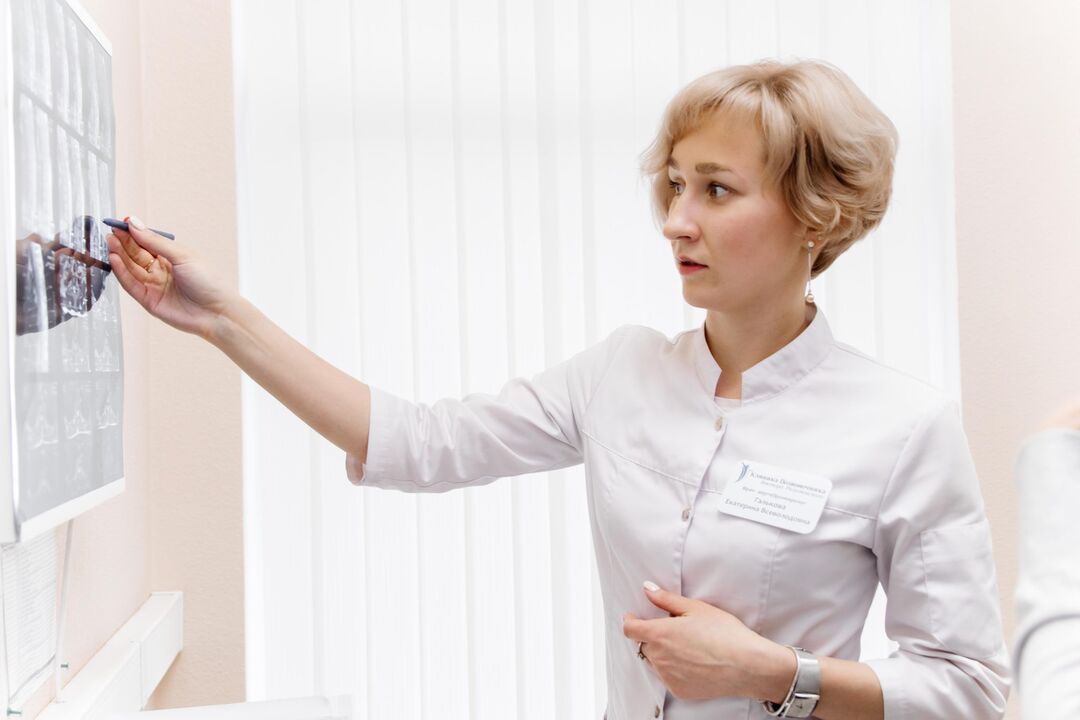
What is cervical osteochondrosis
The cervical spine is the most mobile part of the spine. It consists of 7 vertebrae, between which there are intervertebral discs. The latter ensure the integrity of this zone and perform a shock-absorbing function. Slices have a complex structure: inside is a pulp surrounded by a dense ring of fibers.
With age and under the influence of increased loads, the height of the intervertebral discs decreases. The metabolism is disturbed in the core, the fibrous ring gets cracks. As the disease progresses, the intervertebral discs protrude, protrusions and hernias appear. Osteophytes appear - bone growths that limit the mobility of the spine and cause pain.
Pathological changes occur near the spinal cord and nerve roots. With their compression, a reflex spasm of the muscles occurs. In this case, a person has pronounced symptoms of cervical osteochondrosis.
causes of the disease
Osteochondrosis develops under the influence of a number of reasons. There are several theories that explain the nature of this disease:
- involutionary - the cause of osteochondrosis of the cervical spine is the wear and tear of the intervertebral discs;
- physical - the disease develops due to excessive impact on the vertebrae and intervertebral discs;
- Autoimmune - a person's own immunity destroys intervertebral discs over time;
- vascular - the nutrition of cartilage and bone tissue is disturbed, which is accompanied by pathological changes in the vessels;
- hereditary predisposition - the disease occurs in people with a predisposition to degenerative diseases of the spine.
Important! None of the theories more likely explains the cause of cervical osteochondrosis.
The trigger for the disease can be a combination of several factors:
- incorrect posture, flat feet;
- sedentary work, sedentary lifestyle;
- overweight;
- Injuries and congenital pathologies of the spine;
- excessive physical activity;
- hormonal changes;
- Bad habits;
- vascular diseases;
- genetic predisposition.
The more such factors are combined, the greater the likelihood that the disease will develop, and the faster the dystrophic processes will proceed.
Symptoms of cervical osteochondrosis
Symptoms of cervical osteochondrosis do not appear immediately. The patient may not be aware of the onset of the disease for a long time and pay attention to the state of health only after the onset of pain.
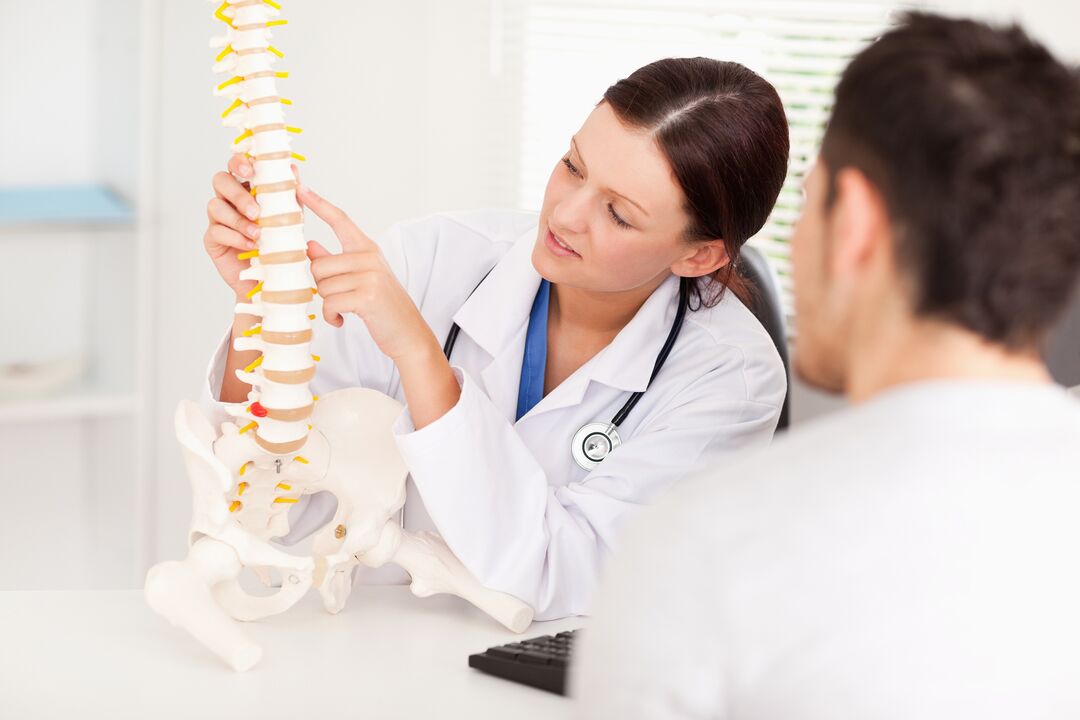
In the first stage of the disease, when the thickness of the intervertebral discs is slightly reduced, you may experience slight discomfort in the neck if you stay in an uncomfortable position for a long time. In the second stage, protrusions appear, which are noticeable through movement stiffness in the neck area.
Further development of the disease leads to constant pain and deterioration in well-being. There are additional signs of cervical osteochondrosis that significantly worsen the quality of life:
- persistent pain in the neck region and collar zone;
- severe stiffness in the neck muscles;
- pain on movement and rest;
- limited mobility in the neck;
- numbness of fingers;
- Headaches and dizziness can also occur.
In addition to common signs, there are several syndromes of cervical osteochondrosis:
- Whirl. Due to damage to the cartilage and bones of the spine, their mobility is limited and pain occurs.
- Vertebral Artery Syndrome. Spasm of the vessels responsible for blood supply to the brain causes tinnitus, headache, fainting and blurred vision.
- Root. Symptoms are associated with pinched nerve roots, causing the patient to experience pain in the shoulder area, numbness in the back of the head, in the fingers, and pain in the shoulder blades.
What is dangerous cervical osteochondrosis?
Patients often consider osteochondrosis of the cervical spine as a disease that does not entail serious consequences. But that is a wrong opinion. Pathology causes dysfunction of vital structures - nerves and blood vessels. If timely treatment is not taken up, the consequence of the disease can be a violation of cerebral circulation, muscle weakness and atrophy, a violation of the functions of internal organs and systems.
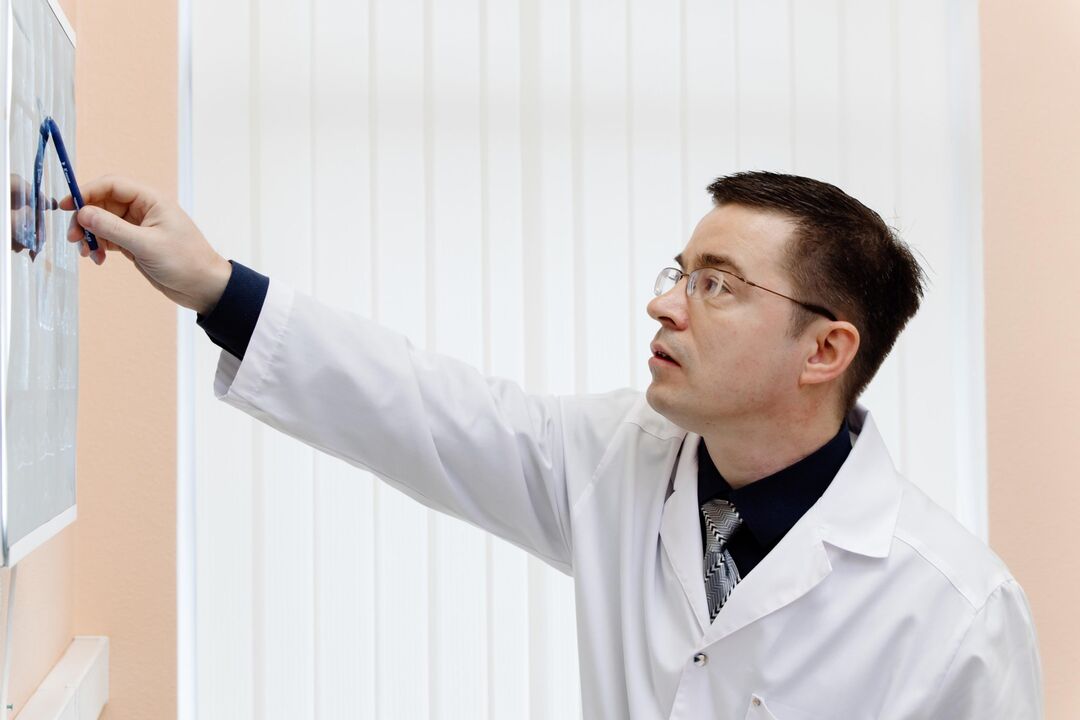
In addition, osteochondrosis leads to reduced mobility of the spine and loss of hand sensitivity. Such significant changes are a serious reason to seek medical help and undergo complex treatment.
diagnosis
A neurologist deals with the diagnosis of cervical osteochondrosis. At the first appointment, he assesses the mobility of the spine, the quality of the reflexes and determines the pain zones. If during the history-taking it turns out that the patient is worried about a whole range of symptoms, you may need to consult other specialists:
- Therapist;
- cardiologist;
- orthopedist;
- gastroenterologist;
- Laura;
- endocrinologist and others.
To diagnose osteochondrosis, a comprehensive examination is used. Of the radiation methods of diagnosis, radiography, computed tomography and MRI are used. Due to the high degree of visualization, MRI enables a diagnosis to be made at an early stage of the pathology. Duplex examination of the cervical and head arteries is recommended if the patient complains of headache and dizziness. The examination allows you to assess blood circulation and the condition of the vessels.
In addition to the listed diagnostic methods, the following are prescribed:
- ECG;
- Ultrasound of internal organs, heart;
- chest X-ray;
- laboratory research.
They allow to distinguish osteochondrosis from other pathologies with similar symptoms.
treatment
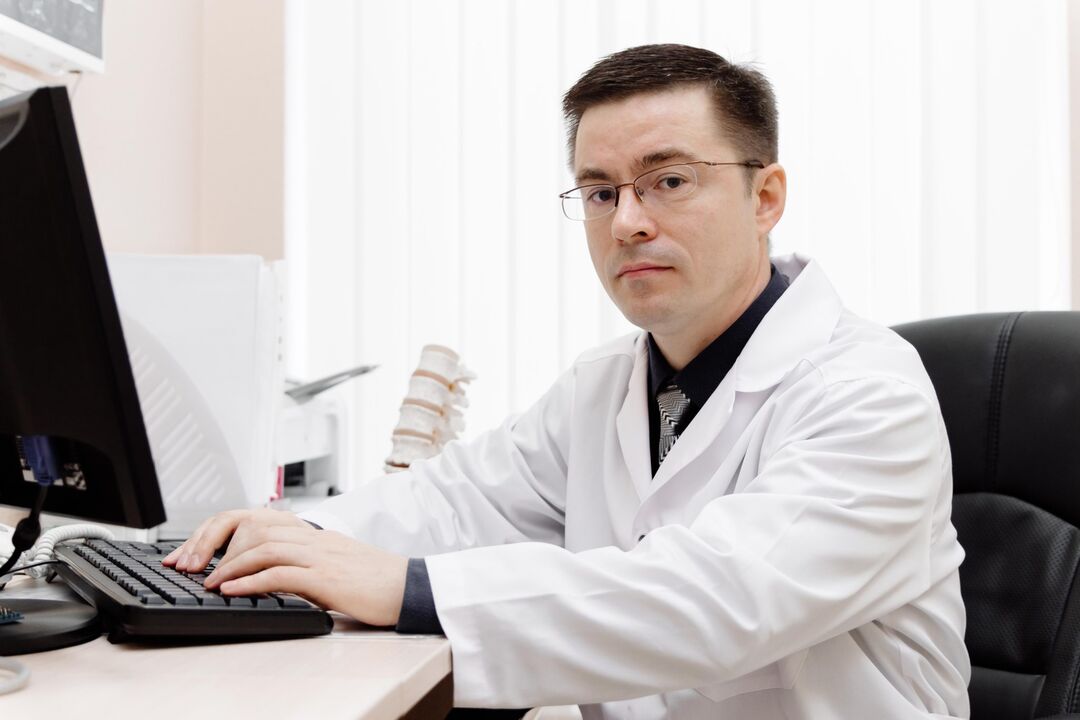
Treatment of osteochondrosis of the cervical spine requires an integrated approach and includes medication, physiotherapy, massage, exercise therapy, manual therapy, carboxytherapy and other modern techniques.
Medical treatment
The main goal of drug exposure is to relieve pain, eliminate dizziness, normalize the functioning of nerve roots, and also stop or slow down degenerative changes in cartilage tissue. Depending on the diagnosis are assigned:
- nonsteroidal anti-inflammatory drugs in the form of drops, injections, tablets, ointments - to relieve inflammation and pain;
- hormonal drugs - to stop the inflammatory process in the ineffectiveness of the previous ones;
- muscle relaxants - medicines that relieve spasms, thereby improving blood flow;
- B vitamins in the form of tablets and injections - to improve the conduction of nerve impulses and the nutrition of nerve tissue;
- Sedatives - for chronic or severe pain, sleep disorders;
- Chondroprotectors - drugs designed to improve metabolic processes in cartilage tissue.
Depending on the symptoms, drugs to improve microcirculation in the brain, decongestants, metabolism and others may be prescribed.
Non-drug methods
In addition to the use of drugs, traditional physiotherapeutic methods such as laser and magnetotherapy, electrical stimulation, phono- and electrophoresis are used to treat cervical osteochondrosis in the acute stage.
Important! A good effect is achieved by massage, manual therapy, osteopathy and reflexology. They are aimed at removing limitations in the work of the spine, reducing pain and regulating the functioning of internal organs.
In addition to traditional medical procedures, innovative methods are used. How to treat cervical osteochondrosis of the spine is determined by the attending physician. The following methods are assigned:
- carboxytherapy. Treatment is with the help of subcutaneous injections of carbon dioxide, which triggers a series of biochemical reactions. This improves microcirculation, reduces swelling and pain and activates local protective processes. The procedure is absolutely safe. It is often used in patients for whom drug therapy is contraindicated. The number of injections depends on the problem and varies between 5 and 10.
- ozone therapy. The procedure reduces pain and inflammation, and the effect lasts for a long time. The introduction of ozone in close proximity to the spine improves tissue nutrition and the outflow of waste products, and also reduces the activity of enzymes that produce degenerative changes in cartilage.
- PRP - therapy (plasma therapy). Platelet plasma is injected into the muscles that are in close proximity to the spine. The procedure has a pronounced stimulating effect on the regenerative processes in all structures of the spine, slows down the process of cartilage tissue destruction, relieves muscle spasms, pain and improves local blood circulation.
- shock wave therapy. Allows you to quickly eliminate muscle spasms, increase blood circulation and remove congestion in tissues.
- Kinesio taping. Kinesio Taping helps to relax the muscles and at the same time supports the spine. The method helps to relieve inflammation and swelling and restore joint mobility.
Non-pharmacological methods also include kinesiotherapy (exercise therapy), leech therapy, musculoskeletal therapy and local cryotherapy. The choice of a method of treating cervical osteochondrosis remains with the doctor, who focuses on the diagnosis and the individual characteristics of the patient's body.
Taking into account the stage of the pathology and the presence of concomitant diseases, a plan for curing cervical osteochondrosis is drawn up.
prevention
If you pay attention to preventive measures, you can prevent or slow down the development of osteochondrosis:
- Lead an active lifestyle, but avoid excessive physical activity.
- Undergo preventive treatment 2p/year.
- Avoid or minimize heavy lifting.
- Use an orthopedic mattress and pillow for sleeping.
- If you work at the computer, do a warm-up every 1 hour.
- Balance your diet by eliminating unhealthy foods.
- Participate in physical therapy regularly.
Important! Swimming is recommended for osteochondrosis. Water relieves the spine, movements form a strong muscular corset.
To protect and relieve the spine, wearing orthopedic aids is recommended if necessary. To improve the metabolic processes in the cartilage and slow down its destruction, do not forget to take chondroprotectors.
treatment in the clinic
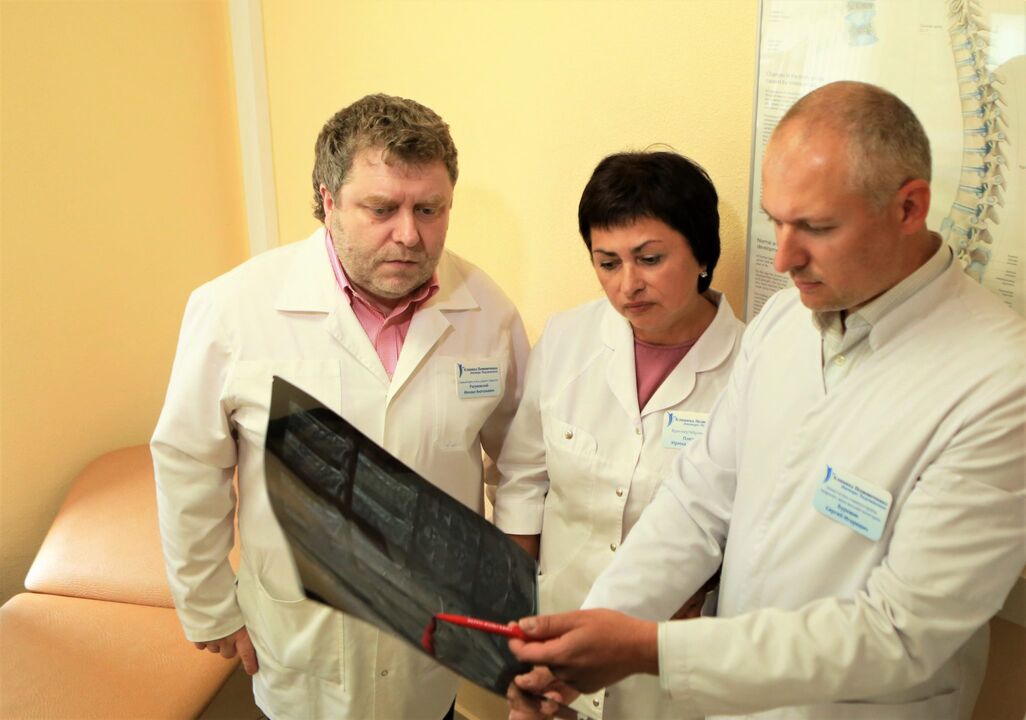
The clinic offers comprehensive diagnostics and modern effective methods of treatment of cervical osteochondrosis of the spine: carboxytherapy, interstitial electrostimulation, general magnetotherapy, shock wave therapy, osteopathy, ozone therapy, local cryotherapy and others.
At the service of visitors:
- comfortable offices;
- modern equipment;
- qualified doctors;
- Reception by appointment;
- polite staff.
When choosing methods of treatment, the doctors of the clinic take into account the diagnosis, characteristics of the patient's body and lifestyle. They give recommendations for the prevention and prevention of further flare-ups.
In addition to treating cervical osteochondrosis in our country, the clinic offers preventive courses, including reflexology, physiotherapy and exercise therapy.
If you are worried about pain in the cervical spine, make an appointment with professionals. They will help you eliminate the manifestations of the disease, give recommendations on prevention, diet and lifestyle.




















